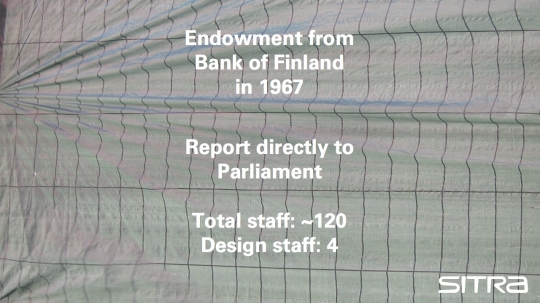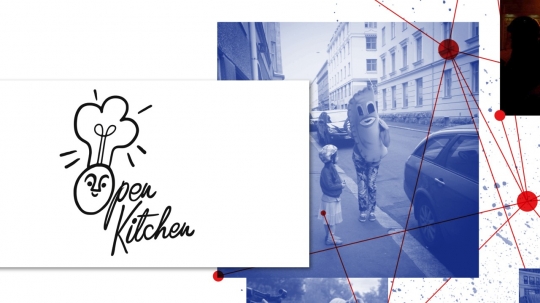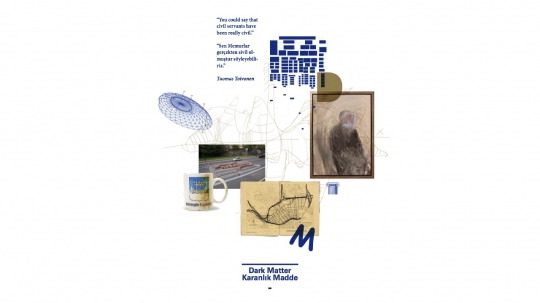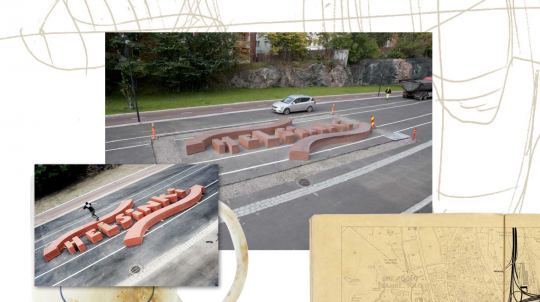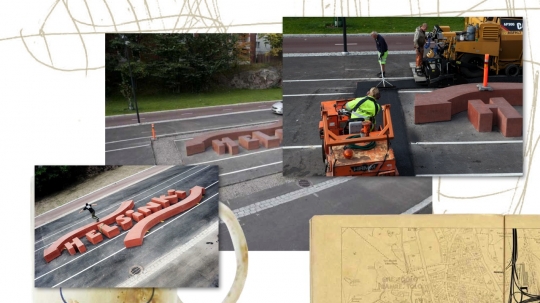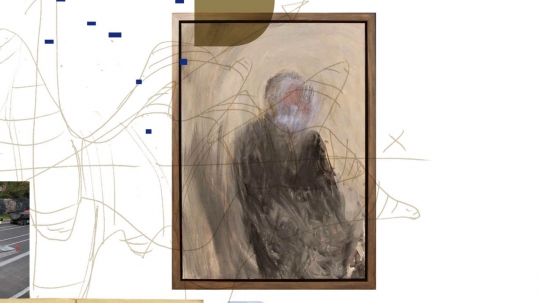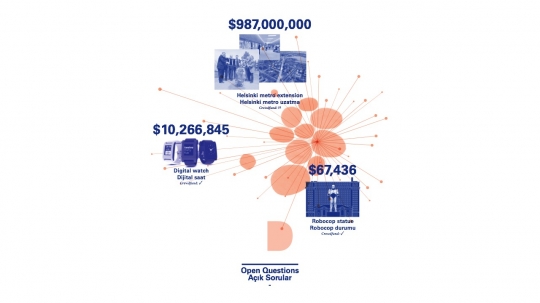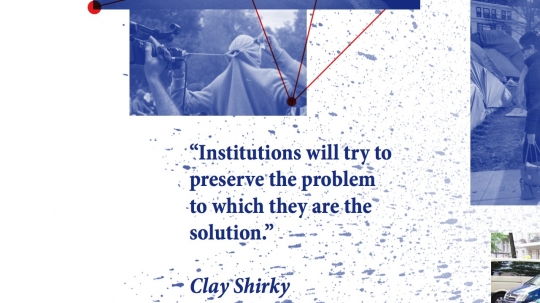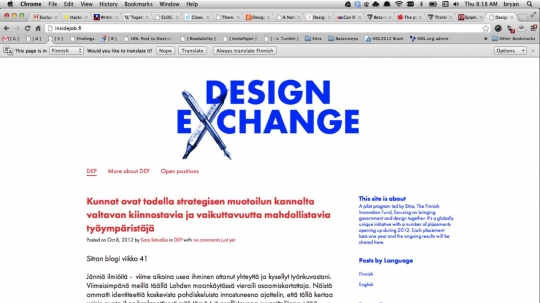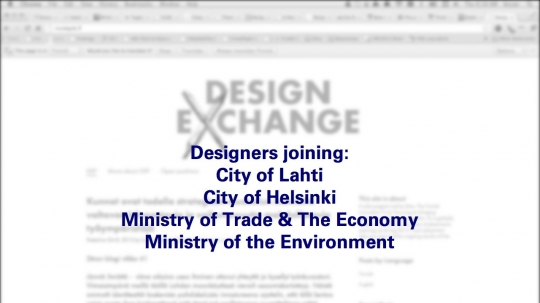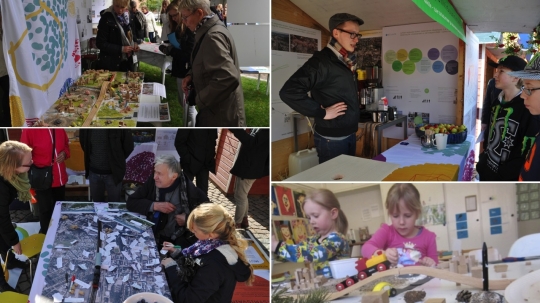Note: Lately I've been returning to the habit of writing prepared remarks in an effort to stick to the strict time limits of various events. As an added bonus, this means I end up with a transcript that can be posted with relative ease. Below is one such example, originally presented at the World Design Forum (previously mentioned here) on October 19th in Eindhoven and curated by the indefatigable intellect of John Thackara. Attentive readers will notice that the starting point shares something with an earlier post, but it quickly diverges. And so...
I'm an optimistic enough to believe that humanity will find a way to weather the immense and multiple crises that are mounting today. I'm less optimistic for our institutions, however, and this is why I've chosen to practice design inside a government agency. I believe that our institutions are outdated technology and that the tools and attitudes of design are part of the fix.
At Sitra we've been testing this notion since 2009 with Helsinki Design Lab. We have projects at different scales, from 10s of thousands of euros to tens of millions.
On the small end, that includes projects like Open Kitchen, which is a bootcamp for food entrepreneurs. We've had an explosion of pop-ups thanks to Restaurant Day, a festival that happens 4 times a year which you can see an image of here.
But what pops up inevitably pops down. Open Kitchen is designed to fill a missing rung on the ladder of innovation. In doing so we hope to help restauranteurs move from pop-up to permanence. This is important because we want to combine the faster cycle speed of pop-up innovation with the reliability of everyday businesses.
On the bigger end of the spectrum, we do things like Low2No, a sustainable urban development project that looks like a block of 5 buildings, but it's actually a vehicle to work with the ministries, the city, and private developers to create climate friendly regulations and business models. We use the messy reality and imperative of the construction project to bring urgency to regulatory change.
One early success has been a change to the fire codes to make it legal to build large buildings out of timber—something we had never expected when we began but discovered and acted on along the way. We call it a success because 4 other timber buildings have been announced since the change, so this is early but important evidence of scale.
What links both of these is an interest in using tangible projects to help organizations, as Jan Van Der Kruis noted earlier, to "witness change."
We have not designed roads to have traffic jams, hospitals to have queues, services to remove personal agency, and tax forms to be confusing. Institutions and their procedures can appear immutable and static, but they are nothing more than an accumulation of human choices. We can make difference choices today, and have different institutions tomorrow.
To do so, we need to develop ways to grapple with something that Dutch architectural historian Wouter Vanstiphout calls "Dark Matter". It's a metaphor for the complexity of institutions: all of the invisible things like incentives, pay grades, organizational culture, and other issues that nevertheless shape an institution's interactions, behavior, and output.
Dark matter is not a barrier because it's massive or negative. Rather it impedes change because it is inscrutable and opaque. We use our projects to help us find the texture and grain of dark matter, and in doing so find specific opportunities for change at the systemic level.
Let me switch now and share a bit of recent history in Helsinki, which nicely explains the imperative for another of our projects.
This is part of a cargo freight line in Helsinki that was renovated into a recreational path earlier this year. It was designed for skaters and it opened on June 12th. Exactly 3 months after it opened, the city of Helsinki came back and vandalized their own work by digging a moat around it to prevent skating. This was done in response to complaints by citizens who live nearby.
One week later, on September 17th, the city came back and filled in their moat after other citizens complained about losing the skate park. By the way, the original project passed through all of the required due process. The city built the thing, defaced it, then restored it, all within a span of four months.
Why?
Because the city was responsive to its citizens —and quickly! But responding in a series of transactions is not the same as fostering an inclusive debate about how we want to live together. Technocratic silos can only respond with technocratic answers. Why not a sign with hours, for instance? Because public works only have trucks and shovels!
Ascriptions of incompetence would be too easy, too simplictic. Instead we find that the institution itself is not in a fair fight with today's society. We are connected through fast and agile networks. We expect engagement from those we take the time to interact with. We want to contribute, not just receive.
But our institutions are without inboxes. In most western countries we have a democratic right to say NOT IN MY BACKYARD, but how easy is it to say YES?
In Helsinki this dynamic is summed up rather poetically in the official portrait of a recent Director of City Works, seen here, seemingly without a face. One wonders if the metaphor was lost on them. And although this is from Helsinki, it's a useful emblem for many institutions in many places, I would guess.
At the same moment we see experiments on the fringe. Crowdfunding websites are providing an alternative for citizens to financially say YES IN MY BACK YARD. This potentially solves a funding problem but it skips questions of democratic process, of debate. One of the first spatial projects on the US crowdfunding site Kickstater was a robocop statue for Detroit. While I happen to like the project, who am I, living in Helsinki, to say that this is what Detroit needs? The local and the global collide in this example with no clear answers just yet. We will have to design one together.
The cost of interacting with institutions is so high that citizens increasingly prefer to accept the risks of self-organization. As our culture changes, the public sector will continue to find itself subject to competition in ways that it's not used to. Restaurant day, which I showed earlier, was organized on Facebook … inspired by the difficulty of the city's own formal permit procedures. This is an unexpected, asymmetric competition to be sure!
If we expect our municipalities and our ministries to behave differently, they will need new capacities as well.
In the Design Exchange we help governments recruit and host designers as part of existing project teams. In other words, we help government change its people, and therefore its tools. These individuals are employees, not contractors. They're part of the fabric of the organization.
By being on the inside, they are better positioned to help frame questions in a holistic way from the beginning. This happens both by bringing a human-centered perspective; by enabling new forms of more fluid communications between institutions and citizens; and by making co-creation with citizens a basic tool, rather than an exceptional one.
Rosanne Haggerty, who runs an NGO in the US aimed at ending homelessness, once told me that "people have a hard time accepting failure unless they also see a solution." With these projects we're attempting to manifest solutions promising enough that they help us engage the failures of the status quo.
Thinking about it today, our hypothesis with the Design Exchange and the other projects is that by jumping straight to possible solutions, and by doing that close to government, we can begin to have a more articulate conversation about how we will redesign our institutions from the inside out.
Thank you.

